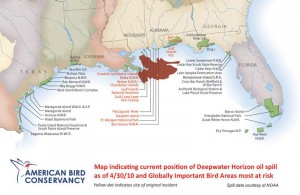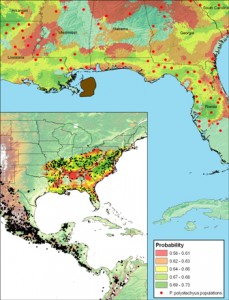Amid all the increasingly sterile arguments about whether GMOs are absolutely essential for agricultural sustainability, it’s nice to come across a bit of data. That may be why the “superweed” story has been all over everywhere without, as far as I can tell, anyone paying any attention to the fact that it is entirely possible to create superweeds simply by misusing chemical pesticides. Always has been, and farmers did so, but misusing genetically engineered pesticides makes it so much easier and quicker. Anyway, back to data. There’s some in the latest Science Express, and it is luscious.
 Kongming Wu and colleagues in the Chinese Academy of Agricultural Sciences took a close look at the miracle of Bt cotton in northern China. And it honestly is a bit of a miracle. Bt cotton is engineered to express toxins that kill insect pests, most notably the cotton bollworm Helicoparva armigera. Engineered cotton is very effective against the bollworm, because it acts as a “dead end” trap crop. Adult moths lay their eggs on Bt cotton, which kills the larvae, which subsequently aren’t around as adults to go and infest other crops that H. armigera, despite its common name, also likes to eat: corn, peanuts, soybeans and vegetables. So,
Kongming Wu and colleagues in the Chinese Academy of Agricultural Sciences took a close look at the miracle of Bt cotton in northern China. And it honestly is a bit of a miracle. Bt cotton is engineered to express toxins that kill insect pests, most notably the cotton bollworm Helicoparva armigera. Engineered cotton is very effective against the bollworm, because it acts as a “dead end” trap crop. Adult moths lay their eggs on Bt cotton, which kills the larvae, which subsequently aren’t around as adults to go and infest other crops that H. armigera, despite its common name, also likes to eat: corn, peanuts, soybeans and vegetables. So,
Bt cotton not only controls a key target pest within cotton fields but also on multiple other non-Bt host crops … reducing the overall need for insecticide sprays.
Win-win! No wonder, then, that since its introduction in 1977 the use of Bt cotton has spread to 95% of growers in northern China, where more than 10 million small scale farmers grow 3 million ha of cotton and 26 million ha of other crops.
Ah, but …
You might think, from the popular “debate” on Bt, that a Bt crop kills any insect that has the temerity to feed on it. Not so. Mirid bugs seem to be immune. But they’re not much of a pest. At least, they didn’t used to be.
In China, mirid bugs have historically been considered occasional or minor pests in most crops, occurring at relatively low population levels and only sporadically requiring pest management intervention.
No longer, and Bt cotton is to blame in a very roundabout way. First off, there’s no big difference between a field of Bt-cotton and one of pesticide-sprayed cotton in the number of mirid bugs each harbours. Bug abundance is the same in both, and the broad-spectrum pesticides that kill bollworms also kill mirids. Over time however, the number of mirid bugs increased significantly as the proportion of Bt cotton increased. And, of course, as more Bt cotton was grown, patterns of pesticide use changed. Sprays against H. armigera and other pests decreased; at the same time, sprays against mirid bugs increased. And the mirid bugs move out onto those other crops.
Mirid bug infestation levels increased in alternative host crops, and respective infestation levels were significantly correlated with regional proportion of Bt cotton planted.
What happens is that an initial wave of mirids moves into the crop fields from the plants where they overwinter, and they far prefer cotton to other hosts. When farmers were spraying against bollworms, that did for the mirids too. Now that they are not spraying, the mirids run riot, breed like, er, bugs, and emigrate from the cotton fields to all those other crops. As Wu and colleagues write:
Our work shows that a drop in insecticide use in Bt cotton fields leads to a reversal of the ecological role of cotton; from being a sink for mirid bugs in conventional systems to an actual source for these pests in Bt cotton growing systems.
Lose-lose? Win some, lose some?
Wu and colleagues point out that most studies of the impact of Bt crops on species other than the target pests has been on natural enemies “or charismatic species such as the monarch butterfly“. Theirs is the first to confirm landscape-scale impacts and the emergence of a new pest “due to reductions in insecticide applications“. (Emphasis added.)
All of which, frankly, fills me with renewed joy and admiration for biological systems. After all, it wasn’t as if such an effect is unprecedented. Spraying against bollworms allowed the cotton aphid to become a pest in the 1970s, and there are surely other examples too. Nor is this a one-off. Last year Indian researchers reported an “epidemic” of mirids on Bt cotton at an experimental station and an increase in mirids associated with higher levels of Bt cotton in Karnataka. Those studies and an Australian one also point out that mirids damage cotton; not as much as bollworms, but enough.
What to make of this? The obvious lesson is that nothing in real farming systems is as simple as advocates of any simple position would have you believe. We’ll see how that one plays out. More strategically, Wu’s results raise again for me the nagging thought that perhaps the medium- and long-term incentives of breeders and growers aren’t necessarily all that closely aligned.
There’s a common narrative that breeders are on a treadmill, because no sooner have they developed some spiffy new variety and deployed it widely than they have created the ideal conditions for pests and diseases to evolve. Abiotic stressors have a way of shifting too, predictably and not-so predictably. And then it is back onto the treadmill, running towards a new spiffy new variety. But if the alternative is to be sat idle, or doing something else, like trying to understand and improve difficult, complex systems, maybe a treadmill is the place to be, and devil take the hindmost.

